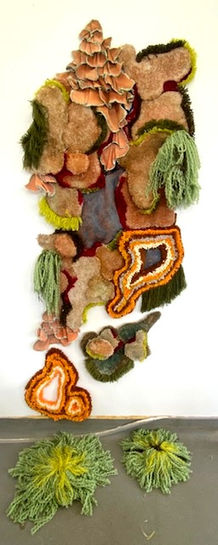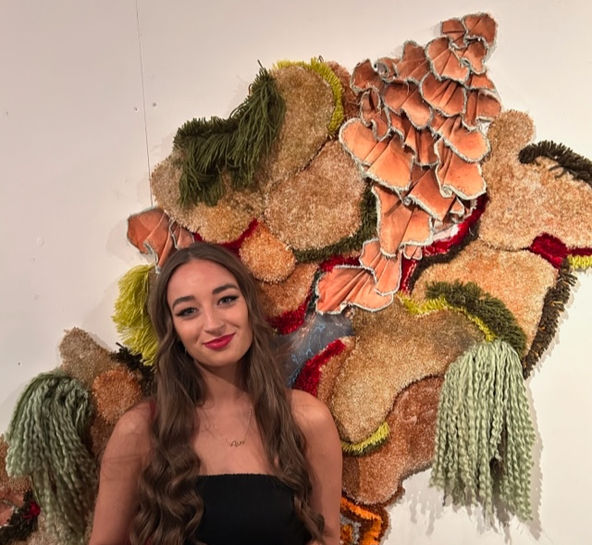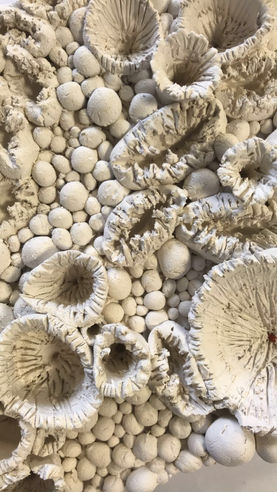

Teacher.
TEACHER STATEMENT
My teaching philosophy centers around respect, trust, and creating a safe, open-minded, and cooperative environment where students are encouraged to explore their artistic potential. In my art class, respect for each student's unique perspective and artistic path is paramount. I foster an environment in which they value themselves as artists and respect the diversity of opinions and expressions. Trust is the foundation of the teacher-student relationship, and I strive to create a space where students believe in their abilities and feel comfortable taking creative risks.
A safe environment is crucial for encouraging creativity and self-expression, allowing students to explore, experiment, and make mistakes without fear of judgment. Open-mindedness is essential, and I encourage students to approach art with an open heart and mind, exploring different techniques, cultural influences, and interpretations. Curiosity is the driving force behind creativity, as students are encouraged to question and investigate.
Collaboration is also emphasized, with students learning to value the exchange of ideas and feedback in the creative process. By adhering to these principles, I aim to empower students to explore their artistic potential and cultivate a profound appreciation for the arts. Ultimately, my goal is to develop open-minded, curious, and collaborative individuals.
In terms of teaching approaches, my practice aligns with the concept of teaching as a transaction. It views teaching as a process where students actively construct knowledge by interacting with the material and drawing on their prior experiences. This approach encourages problem-solving and the creation of valued products or performances, reflecting my belief in active learning and engagement.
In summary, my teaching philosophy is built on respect, trust, and the creation of a safe, open-minded, and cooperative environment where students are encouraged to explore their artistic potential, fostering their appreciation for the arts and nurturing open-minded, curious, and collaborative individuals.
UNITS OF LEARNING
Exploration of the manipulation of materials to create a sculptural piece of art.
In this unit of learning, students will work in groups to create a sculptural representation of the mythical creature known as the Alebrije. They will learn about where the legend came from and the culture surrounding it. They will work in groups of four with each student being allocated an element, water, air, fire and earth. They will then each come up with an animal that represents the element they were allocated and use these to create the alebrije. They will explore the use of a variety of materials and their manipulation of them to turn them into something new and create a piece of art. This project will allow students to learn new skills and techniques in art making while at the same time aiding them in improving their social skills and working as part of a team. They will also explore the use of line, composition, and proportions as they create.
For full Unit of Learning click the picture above
For full Unit of Learning click the image above
Exploration and Appreciation of the details of Nature through Ceramics
In this unit of learning students will create clay sculptural pieces based on their findings on the local beach or in the local woods. The aim is to focus on texture and pattern and to appreciate the detail and intricacy found in nature. In this example I looked at my local beach. These aspects of nature are symbols of life and evolution. The seaweed will eventually rot, then dry, and be absorbed back into the sand to act as nourishment. The fossils will educate the students on evolution and what was and what is left behind. The barnacles are a source of information on a symbiotic relationship that happens in nature. All of these will assist them in appreciating and understanding nature and will inspire them in their art-making. They will experiment with different tools, techniques, and methods of manipulating clay to bring their visions to life.
Exploration of the Local Library through poetry, illustration, and Etching
In this 10-week unit of learning students will embark on a journey of interpreting literature through visual means. They will respond to a poem written about their local library by creating illustrations that they will then transform into etchings. Each student will be allocated a line of the poem to interpret. They will visit the library where they can take primary source photographs of the building and interior, they can make preliminary sketches of different areas that are relevant to their allocated line, and research illustration artists in their favorite books that may inspire their own work. The students will then complete their prints along with the line from the poem to create a book that will be exhibited in the library. Students will learn about the relationship between literature and visual art and how to transform conceptual ideas into realized art pieces. The students will also become more immersed in their locality and engage with the community throughout the course of the project.
For full Unit of Learning click the image above
For full Unit of Learning click the image above
Character Design and Animation through the lens of "First World Problems"
In this 10-week short course, students will embark on a character design and animation journey. They will learn about different animators such as Walt Disney and William Kentridge and character design artists like Glen Taylor and Will Sliney, a variety of different animation processes and techniques, and how to bring a character and story to life through the process of animation. They will be given the overarching theme of “First World Problems”. Each student will design a character based on themselves and create a storyboard about the character experiencing a first-world problem. They will then bring their character and story to life through the process of creating a flipbook animation either digitally or physically. This unit will allow students to learn more about the world of digital art, improve their drawing skills, unite art with humour and wit as well as touch on social commentary.
Music Video Creation for the School Song through animation
In this 7-week unit of learning, students will learn about the traditional animation processes through the creation of a music video for the school’s anthem. The students each get one line of the song to create a 4-second animation. They will research animators such as Walt Disney and Glen Taylor and experiment with their different techniques and methods of traditional animation. They will use the school grounds and their peers as inspiration for their animation pieces. They will take photographs and make observational drawings to respond to the line of the song in a visual means, translate these drawings into a storyboard, and finally make an animation with 12-16 frames. They will then compile the individual animations along with a recording of the school song to create a unique music video to go on the school website.
For full Unit of Learning click the image above

Artist.
Artist Statement
As a textile and sculptural artist, my work is deeply rooted in the profound beauty and interconnectedness of the natural world. Nature, with its intricate patterns, textures, and organic forms, has been a constant source of inspiration for my creations. I am fascinated by the delicate dance between humanity and the environment, and I seek to explore and celebrate our relationship with the natural world through my art.
One of my core aspirations as an artist is to challenge traditional notions of art creation and appreciation. I believe that art should not be a passive experience but rather a dynamic and inclusive one. In pursuit of this, I craft interactive pieces that beckon viewers to engage with their senses, encouraging them to touch and feel the materials, thus fostering a deeper connection to the work.
Through my art, I aim to break down the barrier that often exists between the creator and the audience. I want my viewers to become active participants, co-creators, and interpreters of the art. By allowing people to physically interact with my pieces, I hope to create a more immersive and inclusive way of experiencing art. It is my belief that this tactile engagement not only enriches the viewer's connection to the work but also deepens their appreciation for the natural world that inspires me.
Ultimately, my artistic journey is an exploration of the delicate harmony between art and nature, a celebration of the ties that bind us to the environment, and an invitation to all to engage with art in a more profound, multi-sensory, and interactive way. My work represents a bridge between the human experience and the natural world, a testament to the power of art to unite us in our shared connection to the beauty that surrounds us.
TEXTILES
My textile work primarily revolves around the exploration of naturally occurring textures and patterns found in nature, particularly in growths such as moss and fungus. The inspiration for my work predominantly derives from my observations at Shanakyle Bog. Within my practice, I delve into these natural elements through the mediums of textiles and sculpture, with the core principle of my art being the tactile experience it offers and the phenomenon of art through touch. My goal is to foster a more immersive and interactive means of engaging with artwork.
CERAMICS
In my ceramic project, I delve into the exquisite complexities of nature, drawing inspiration from the delicate wonders of shells and fossils. These natural artifacts, shaped by time and the elements, embody a profound beauty that captivates and intrigues. The project is a manifestation of my deep connection to the environment, rooted in a commitment to sustainability and a keen observation of the world around me.
Central to this exploration is the use of reclaimed clay gathered from my local beach. This sustainable approach not only echoes the project's thematic focus on nature but also reflects a dedication to environmentally conscious art-making. The clay, weathered by the tides and transformed by its exposure to the elements, carries within it a unique history that adds layers of meaning to each piece.
Through meticulous handcrafting, I aim to capture the intricate textures, patterns, and forms inherent in shells and fossils. The tactile quality of the ceramics invites viewers to engage with the work on a sensory level, fostering a deeper connection to the natural world. The pieces, ranging from delicate fragments to more elaborate compositions, serve as both homage to the beauty of nature and a reflection on the impermanence of existence.
Ultimately, my ceramic project is a celebration of the artistry inherent in the often-overlooked details of the natural world. It is an invitation to pause, appreciate, and contemplate the intricate dance of time and transformation that shapes the landscape of our lives.


















